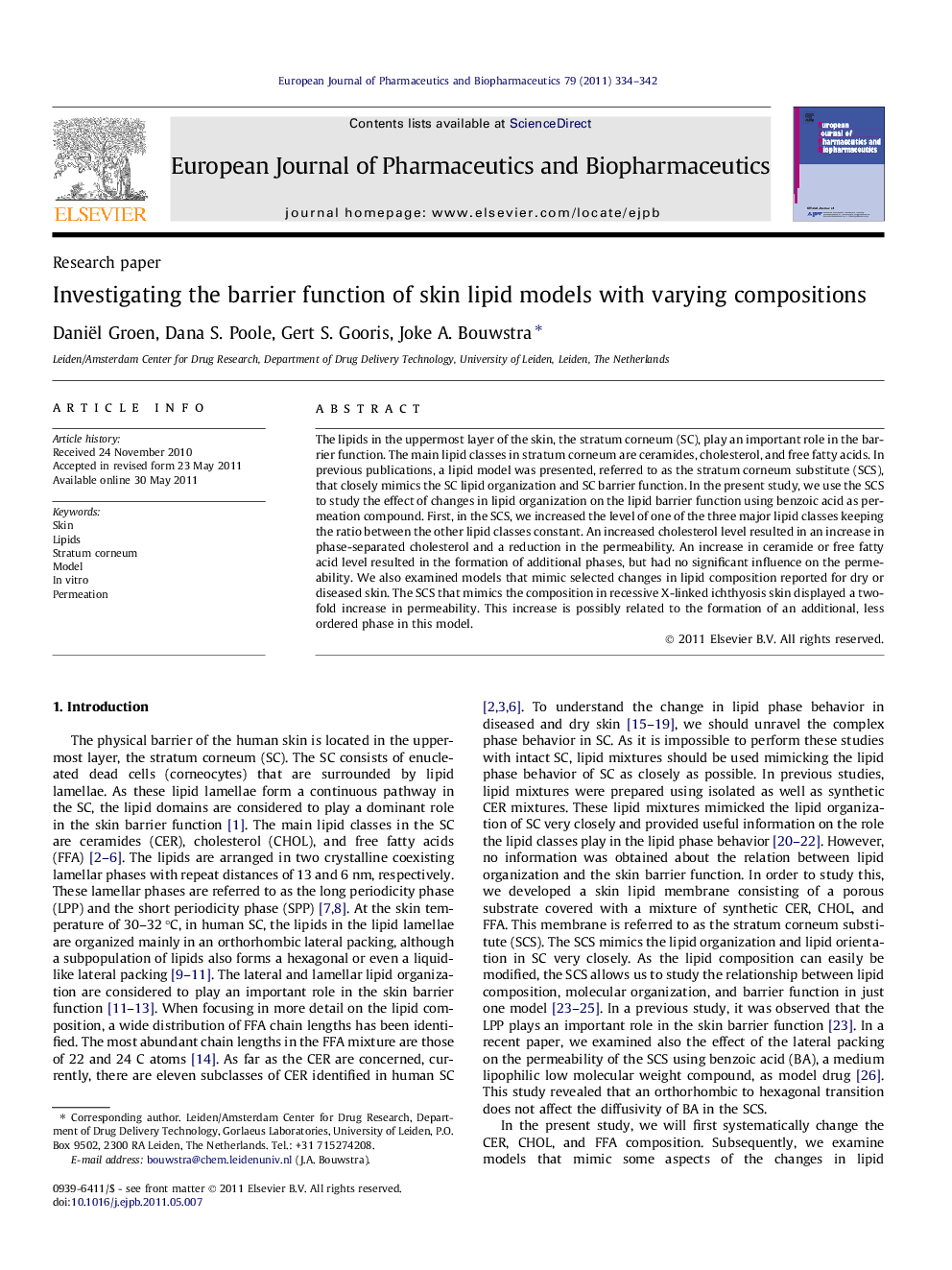| کد مقاله | کد نشریه | سال انتشار | مقاله انگلیسی | نسخه تمام متن |
|---|---|---|---|---|
| 2085406 | 1545366 | 2011 | 9 صفحه PDF | دانلود رایگان |

The lipids in the uppermost layer of the skin, the stratum corneum (SC), play an important role in the barrier function. The main lipid classes in stratum corneum are ceramides, cholesterol, and free fatty acids. In previous publications, a lipid model was presented, referred to as the stratum corneum substitute (SCS), that closely mimics the SC lipid organization and SC barrier function. In the present study, we use the SCS to study the effect of changes in lipid organization on the lipid barrier function using benzoic acid as permeation compound. First, in the SCS, we increased the level of one of the three major lipid classes keeping the ratio between the other lipid classes constant. An increased cholesterol level resulted in an increase in phase-separated cholesterol and a reduction in the permeability. An increase in ceramide or free fatty acid level resulted in the formation of additional phases, but had no significant influence on the permeability. We also examined models that mimic selected changes in lipid composition reported for dry or diseased skin. The SCS that mimics the composition in recessive X-linked ichthyosis skin displayed a twofold increase in permeability. This increase is possibly related to the formation of an additional, less ordered phase in this model.
Schematic overview of the permeation experiment using a flow-through diffusion cell.Figure optionsDownload as PowerPoint slide
Journal: European Journal of Pharmaceutics and Biopharmaceutics - Volume 79, Issue 2, October 2011, Pages 334–342